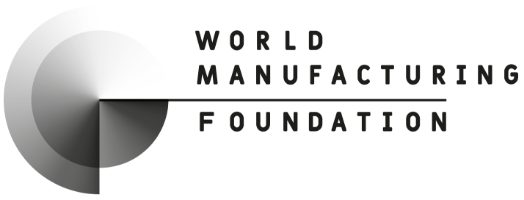

Women in Manufacturing
- Manufacturing Platform
- Women in Manufacturing
Women in Manufacturing
Cristina Oyón
Director of Technology, Innovation and Sustainability, SPRI – The business development agency of the Basque Government
The Manufacturing sector and the global economy in general are being seriously affected by the COVID-19 outbreak. The World Manufacturing Foundation is calling to action to its partners and players from different geographies and sectors – industrial, academy and policy – to let their voices be heard on the impact of the health crises on the manufacturing sector in the Back to the Future: Manufacturing Beyond Covid-19 project. This project aims at realizing a multi-disciplinary white paper highlighting the best “back to the future” practices from the manufacturing sector after the Covid-19 outbreak and recommendations to stimulate future courses of actions in a post-Covid-19 manufacturing paradigm.
Women in Manufacturing is one of the focus topics of Back to the Future project, which addresses the role of women during and after pandemic and analyzes how the new normal status will help in rebalancing the gender difference in manufacturing.
Women are nowadays significantly under-represented in the industry. In general terms, around 30% is the share of women employed in industry. According to the World Economic Forum, 33% is the share of women at junior level staff, 24% at mid-level staff, 15% at senior level staff, 9% as CEOs across all industries.
The new manufacturing industry needs the potential of women to ensure it gets the talent required to overcome the economic disruption the Covid-19 crisis is imposing. Why women are not accessing the industry, when and why women tend to abandon and how the Covid 19 crises is affecting women workers in the industry are the questions being addressed by the Women in Manufacturing expert group. The group is integrated by 20 experts from 11 countries in 3 continents. 7 of them work for international organisations, 8 for private companies, 3 in academia and 2 in the public sector. I would like to take the opportunity to thank all participants for their willingness, availability, and sound contributions to the group.
To fully cover the situation of women in manufacturing we should differentiate between developed and developing countries, local realities and social backgrounds. The group has decided to focus on the higher added value activity of the manufacturing industry, where we hope we can make a bigger impact by increasing the presence and responsibility roles of women, contributing in this way to the momentum for closing the gender gap in the manufacturing industry.
The main result of our work will be a set of recommendations for policy makers and industrial leaders to stimulate future actions for the best “back to the future” practices, that will be more digital, greener and more inclusive.
Our work has started developing a better understanding of women situation in the manufacturing environment. To this end, the group is analyzing the main entry barriers for women in industry, why manufacturing industries are not attractive to women, why women have a limited presence in STEM fields. There is a perception of gender roles that makes women feel industry “is not for them” and role models at leadership and on the shop floor are lacking. The very strong societal expectations regarding gender roles for men and women have a very relevant influence on organizational culture in industry (from family businesses to big companies).
Women do not feel comfortable entering male-dominated workplaces. Moreover, there is a perception that a job in manufacturing is monotonous assembly-line task or work that is done in a dirty and dangerous environment, preconceptions that bear little resemblance to the modern, innovative and technologically advanced manufacturing operations.
As barriers to retention and career advancement, the group is mainly analyzing issues related to working conditions and gender imbalanced in responsibility roles. Women often concentrate in lower paid supporting jobs. Persistent gender wage gaps are reported across all industries, even in industries where female participation is comparatively high. In addition, women are not reaching the top levels of leadership. Board membership also lags behind, being notably lower for women than for men in all countries. And there is no lack of qualified woman, (the number of female university graduates is higher in many countries), there is a glass ceiling. Generally, for a woman to reach a leadership role, competence, motivation and a great resilience are needed.
The group is devoting special attention to the presence of women in R&D fields. The industry at the “back to the future” will be more innovative and sustainable and innovation and technology are the key factors of success. The presence of women in R&D activity must be reinforced although our starting point is not encouraging. Women have limited presence in STEM fields. Women students are fewer in STEM education and do not remain in academic research positions that are key to R&D in the manufacturing industry. As a result, they concentrate on administrative, client support and marketing jobs, and are still underrepresented in the engineering and scientific career tracks.
The dominant understanding and practice of R&D in manufacturing is gendered as masculine. Gender bias in science and technology has long been underrated or even denied, contributing to the supposed gender-neutrality of science, but science is no exception. And the significant gender gap in digital skills is also worrying, since labour markets increasingly reward social and digital skills, key for the dual digital and green transition ahead.
The gender impact of Covid-19 crisis is also in our scope, as it is affecting disproportionately women workers. More women work in vulnerable conditions. The possible job losses in the manufacturing industry we are facing are coming in three waves: the first wave is taking place in big companies; the second wave will have an impact on the supply chain businesses (especially SMEs); and third wave will come when the time reduction schemes are running out. Such impacts risk rolling back the already fragile gains made in female labour force participation, when companies are forced to downsize, diversity is deprioritised affecting women the most. Part-time, temporary and/informal employees bear the lion’s share of job losses. The gender gap in the proportion of informal workers in hard-hit sectors is far greater.
The COVID-19 crisis is also giving us the opportunity to see the different approach of the female leadership during the emergency and the lockdown, especially in SMEs, that in many occasions has proven a more resilient and inclusive response. The direction the world of work is taking with the potential of remote work and the greater flexibility it supposes could be the long-deserved chance for achieving life balance while thriving in the professional arena. Diverse teams lead to more innovation that is particularly relevant in times of disruptive change as the one we are living. To make the business and economic case in the “back to the future”, manufacturing industry requires all resources available and women are one of the industry’s largest pool of untapped talent. The Women in Manufacturing expert group is working to stimulate an equal participation of women and men in the workplace to build a lasting and prosperous recovery of the industry.